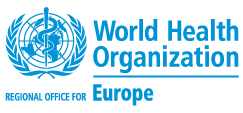NEWS – launch of new European Respiratory Virus Surveillance Summary (ERVISS) and closure of FluNewsEurope bulletin
ECDC and the WHO Regional Office for Europe have jointly developed the European Respiratory Virus Surveillance Summary (ERVISS), an interactive surveillance data dashboard for influenza, respiratory syncytial virus (RSV), and severe acute respiratory syndrome coronavirus 2 (SARS-CoV-2) that also features a weekly epidemiological summary. The primary aim of the platform is to serve as a tool for the early detection and communication of signals of respiratory virus circulation in the EU/EEA and WHO European Region, see press statements linked below:
With the launch of European Respiratory Virus Surveillance Summary (ERVISS) that covers all influenza data displayed before, from the influenza season 2023/24, www.FluNewsEurope.org is not going to be updated and maintained anymore and will be retired in due course.
The link to the European Respiratory Virus Surveillance Summary (ERVISS) is erviss.org.
****************************************************************************
НОВОСТИ: начало публикации новой эпидемиологической сводки по респираторным вирусам в Европе (ERVISS) и прекращение выпуска бюллетеня «Последние новости о гриппе в Европе»
Европейский центр профилактики и контроля заболеваний (ECDC) и Европейское региональное бюро Всемирной организации здравоохранения (ЕРБ ВОЗ) совместно разработали эпидемиологическую сводку по респираторным вирусам в Европе (ERVISS) – интерактивную информационную панель по гриппу, респираторно-синцитиальному вирусу (РСВ) и коронавирусу тяжелого острого респираторного синдрома – 2 (SARS-CoV-2), в рамках которой, в частности, будет еженедельно публиковаться краткий эпидемиологический обзор. Главная цель этой платформы – раннее выявление признаков циркуляции респираторных вирусов в ЕС/ЕЭЗ и Европейском регионе ВОЗ и оповещение заинтересованных сторон. См. заявления для прессы по ссылкам ниже.
Поскольку в ERVISS будут включены все соответствующие данные эпиднадзора, начиная с сезона 2023–2024 гг. выпуск бюллетеня «Последние новости о гриппе в Европе» (www.FluNewsEurope.org) будет прекращен, и впоследствии этот ресурс прекратит свое существование.
Эпидемиологическая сводка по респираторным вирусам в Европе (ERVISS) публикуется по адресу erviss.org.
Information on countries and areas reporting on intensity of activity and geographic spread for this week can be seen in the Figures below.
Please note that maps cannot be displayed at this time.
Please note:
Assessment of the intensity of activity indicator includes consideration of ILI or ARI rates. These ILI or ARI rates might be driven by respiratory infections other than influenza virus, including SARS-CoV-2, leading to observed increases in the absence of influenza virus detections.
Assessment of intensity and geographic spread indicators includes consideration of sentinel and non-sentinel influenza virus detection data. Non-sentinel influenza virus detections, often higher, might translate into reporting of elevated geographic spread even in the absence of sentinel detections and/or low intensity of activity measured by ILI and ARI incidence.






